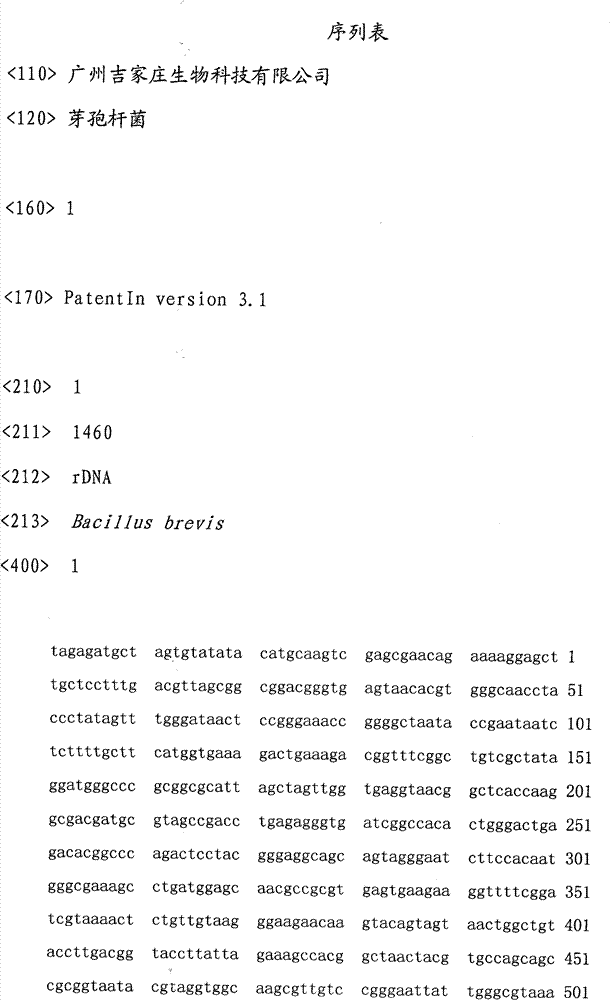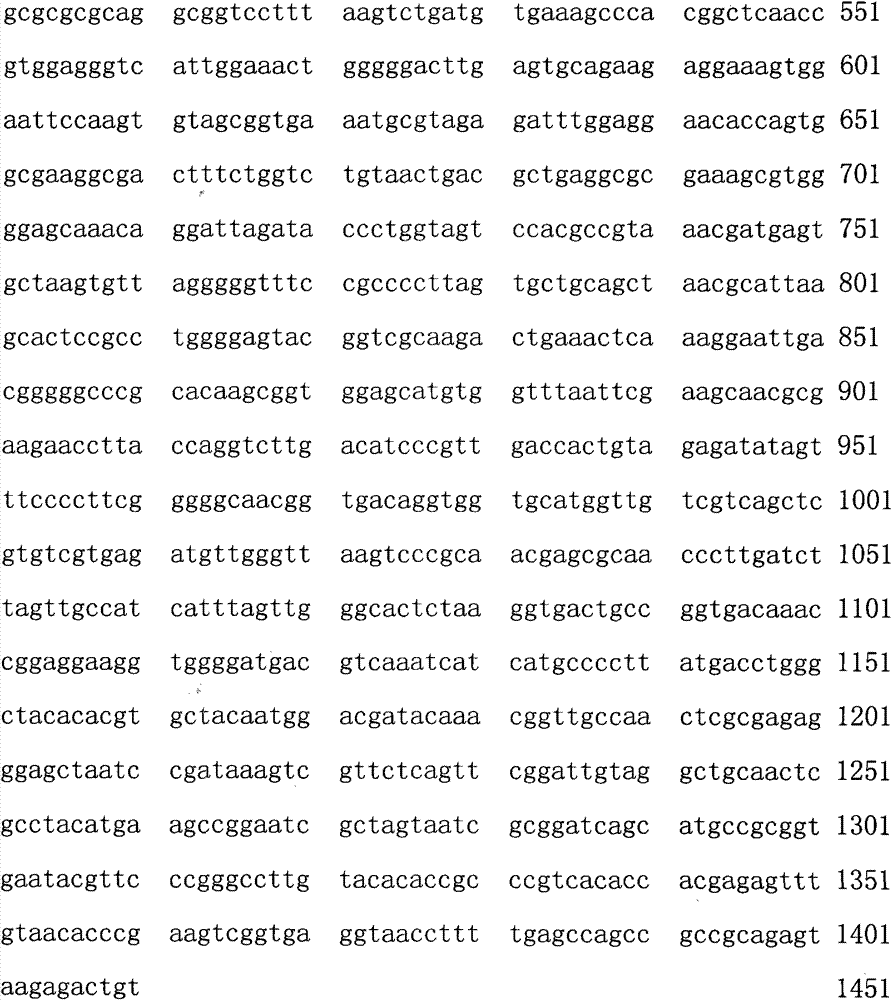Bacillus brevis, method for extracting bacillus brevis esterase and application of same
The technology of a bacillus and an extraction method is applied in the field of extraction of bacillus and its esterase, and can solve the problems of high cost, large differences in enzymes, unstable enzyme sources, etc., and achieves reduced workload and cost, good repeatability, Overcome the effects of low sensitivity
- Summary
- Abstract
- Description
- Claims
- Application Information
AI Technical Summary
Problems solved by technology
Method used
Image
Examples
Embodiment 1
[0024] Bacillus brevis GDXEase8 provided by the invention has the following properties:
[0025] 1. Morphological characteristics
[0026] The colonies of the strains on the plate are round, light yellow, opaque, smooth, and with neat edges. The cells are rod-shaped, with a diameter of about 0.8 μm and a length of about 2-3 μm. Gram staining is positive, and the spores are oval and proximal.
[0027] 2. Physiological and biochemical identification
[0028] The results of antibiotic resistance and contact enzyme tests on the strains showed that the strains were resistant to nalidixic acid and spectinomycin, and the results of contact enzyme tests were positive.
[0029] 3.16SrDNA sequence
[0030] The 16SrDNA sequence of the strain is shown in SEQ ID NO:1.
Embodiment 2
[0032] The preparation method of the bacillus esterase described in embodiment 1:
[0033] (1) Slant strains: inoculate the preserved strains on nutrient agar slant for culture, and store at 0-4°C.
[0034] (2) Enlarge the seed liquid culture: inoculate the slant bacterial classification into the 250ml Erlenmeyer flask that 100ml seed culture medium (peptone 1%, yeast extract 0.5%, NaCl 0.5%, pH7.0) is housed, 37 ℃, 200rpm, shake The bed was incubated for 12 hours.
[0035] (3) Fermentation culture: Inoculate 100ml of expanded culture seed solution into 10L fermenter, and cultivate it for 24 hours at 37°C (medium formula: glucose 1%, peptone 2%, K 2 HPO 4 0.1%, NaH 2 PO 4 0.1%, pH7.0).
[0036] (4) Extraction of enzyme liquid: centrifuge the fermented bacterial liquid (4000rpm) for 15min, collect the bacterial cells, wash with 0.02mol / L phosphate buffer (pH7.0), suspend with phosphate buffer again, and extract by ultrasonic wall breaking method. For enzyme, centrifuge (4...
Embodiment 3
[0038] The sensitivity detection of the bacillus esterase described in embodiment 2 to organophosphorus pesticides:
[0039] Materials: bacterial esterase, indophenol acetate solution, and phosphate buffer
[0040] Instrument: constant temperature water bath, spectrophotometer
[0041] Determination of esterase activity: add 4.7mL 0.02mol / L, pH7.0 phosphate buffer, 200μL 2% indophenol acetate, mix well, bathe in 37℃ water for 10 minutes, add 100μL Bacillus esterase, react for 5 minutes Then add 5mL of absolute ethanol to stop the reaction (the control tube added bacillus esterase after adding absolute ethanol), measure OD605.
[0042] Inhibition rate calculation: (OD0-OD1) / OD0×100% (OD0: OD value without inhibition; OD1: OD value after inhibition)
[0043] The measurement results:
[0044] (1) Sensitivity of Bacillus esterase to dichlorvos
[0045] When the concentration of dichlorvos is 0.005ppm, the inhibition rate is higher than 50%, lower than the relevant standard [G...
PUM
 Login to View More
Login to View More Abstract
Description
Claims
Application Information
 Login to View More
Login to View More - R&D
- Intellectual Property
- Life Sciences
- Materials
- Tech Scout
- Unparalleled Data Quality
- Higher Quality Content
- 60% Fewer Hallucinations
Browse by: Latest US Patents, China's latest patents, Technical Efficacy Thesaurus, Application Domain, Technology Topic, Popular Technical Reports.
© 2025 PatSnap. All rights reserved.Legal|Privacy policy|Modern Slavery Act Transparency Statement|Sitemap|About US| Contact US: help@patsnap.com


